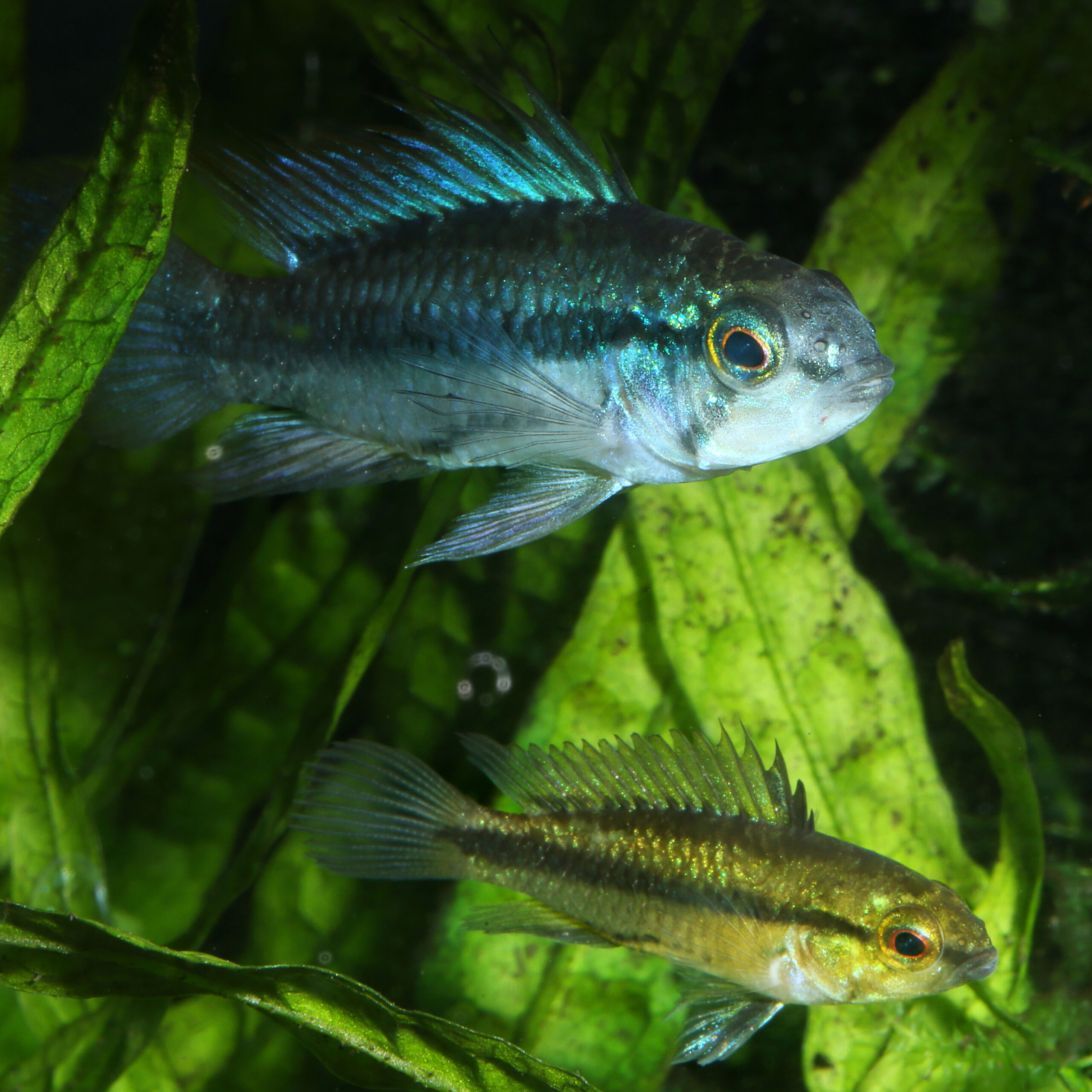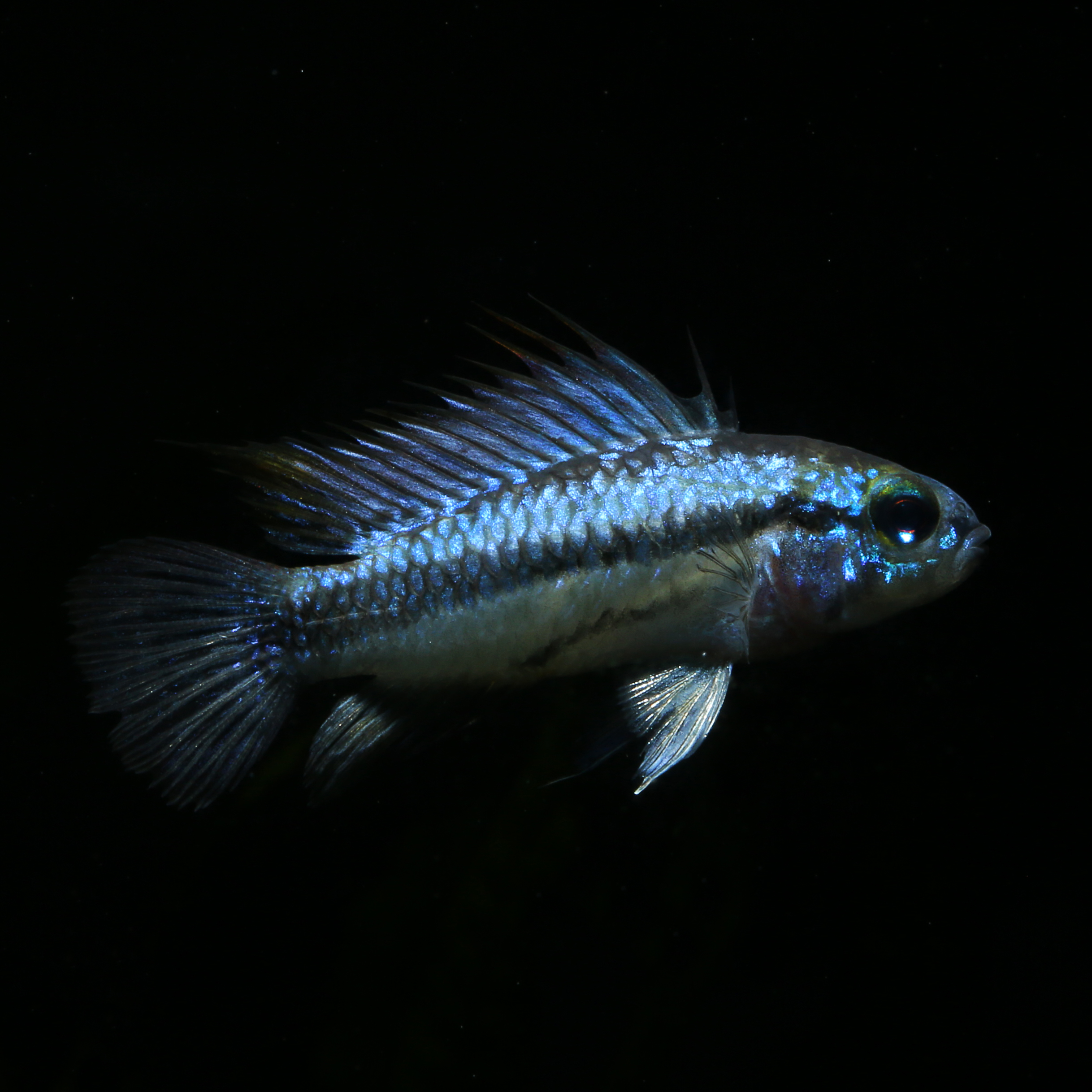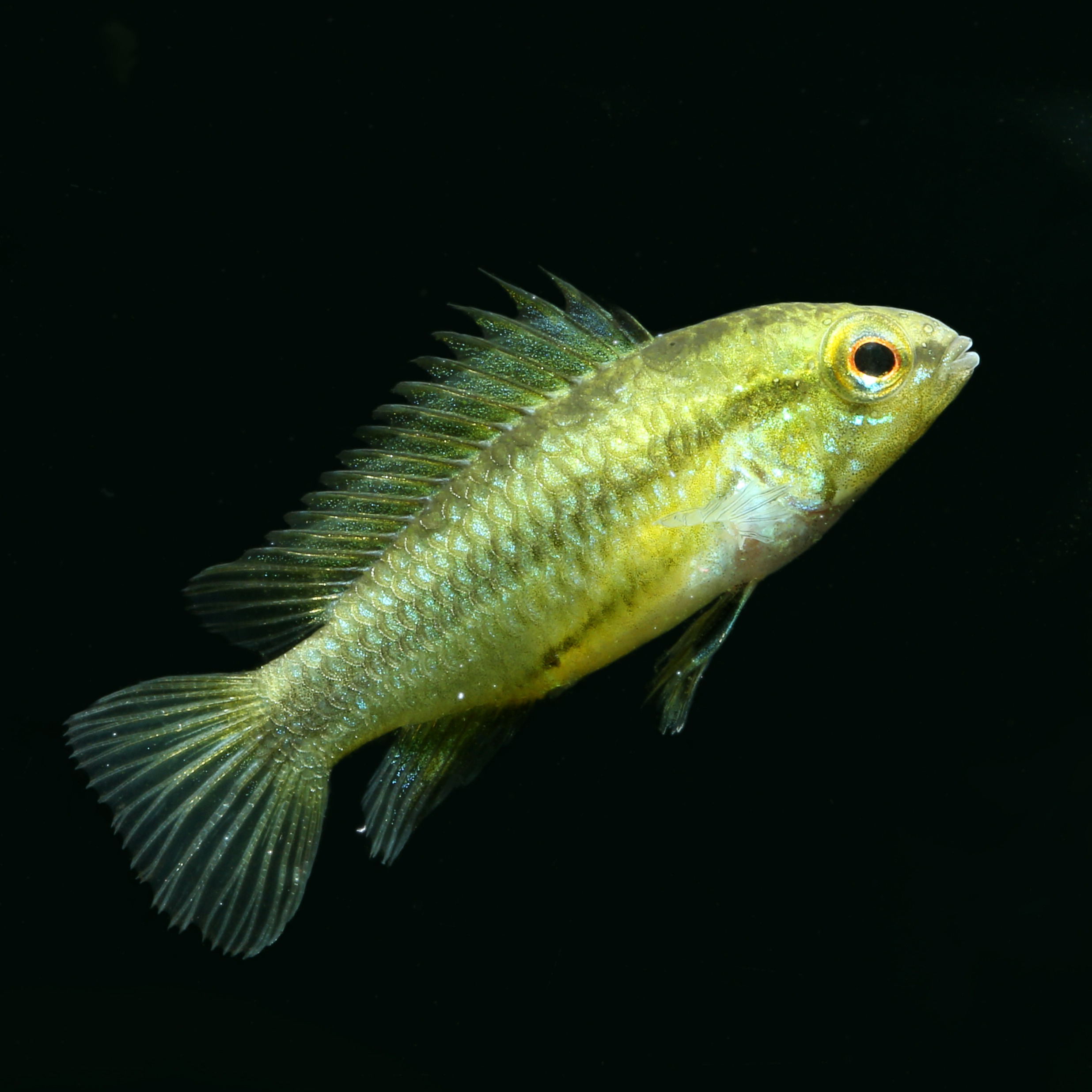Three-Striped Dwarf Cichlid
Apistogramma trifasciata
The Three-Striped Dwarf Cichlid is a beautiful fish from South America that likes to stay near the bottom.
- beautiful South American fish
- one of the most peaceful dwarf cichlids
- metallic blue shimmer
Choose your variation:
 Delivery in a few working days
Delivery in a few working days
 Free shipping from €60 across Austria
Free shipping from €60 across Austria





Important data
Product description & details
The Three-Striped Dwarf Cichlid is a beauty native to South America, found in the upper reaches of the Rio Guapore and the lower Rio Paraguay in Brazil and Bolivia. There it prefers to inhabit shallow bank zones of small watercourses in the tropical rainforest, which have temperatures between 24 and 28°C and whose floors are typically covered with a thick layer of leaves. Like most Apistogramma species, Apistogramma trifasciata prefers to stay near the ground between layers of leaves and roots. Typical of the species and giving the Three-Striped Dwarf Cichlid its name are the three dark stripes, which extend lengthwise over the flank, below the eye along the cheek and from the pectoral fin to the anal fin.
Care in the aquarium
To care for the Three-Striped Dwarf Cichlid, a tank with a capacity of at least 112 liters or an edge length of 80cm is required. Since this species is territorial and inhabits very shallow waters in nature, the surface area is significantly more important than the height of the aquarium. For each fish, both male and female, around 25-30cm² of area should be planned as a territory. A well-structured aquarium with dense plants and hardscape such as roots, stone structures and caves also offers opportunities for retreat and helps to define territories. This dwarf cichlid can be kept in pairs or, provided there is enough space, in a harem with one male and several females. Light that is not too bright and a dark substrate also ensure that it feels comfortable. It is possible to socialize the Three-Striped Dwarf Cichlid with fish that are not too hectic, such as South American tetras.
Feeding
In nature, dwarf cichlids of the genus Apistogramma feed mainly on small aquatic animals such as insect larvae, other invertebrates or small fish. In the aquarium, the Three-Striped Dwarf Cichlid can easily be fed with protein-containing flake and smaller granulate food that does not sink too quickly. However, live and frozen food are particularly popular. A wide range of food types such as white and black mosquito larvae, daphnia, artemia, tubifex or enchytraea are suitable for this.
Sexual characteristics and breeding
Most Apistogramma species show very pronounced sexual dimorphism, so males and females usually differ very clearly from each other. Male Three-Striped Dwarf Cichlids have iridescent blue flanks and often a significant extension of the second and third dorsal fin rays. In addition, when fully grown, with a maximum body length of 6cm, they are significantly larger than the females, which can be up to 4cm long. The females, on the other hand, have a gray to slightly yellowish body color and shine bright yellow during the breeding season. Propagating the Apistogramma trifasciata in the aquarium is not particularly difficult as long as its basic needs, such as suitable caves and rather soft, acidic water, are met. As cave breeders, these dwarf cichlids lay their eggs on the ceiling of caves or on the underside of plant leaves and look after them together as a pair. The female takes care of the brood, while the male defends his territory and the offspring within it. The young fish hatch after a few days and after less than a week they are already swimming freely. After the yolk sac has been consumed, the little ones can be fed with small live or frozen food, such as newly hatched Artemia nauplii, copepods or Cyclops. They are cared for by their mother for about 4 weeks and shown around the aquarium, which is very interesting to watch.







